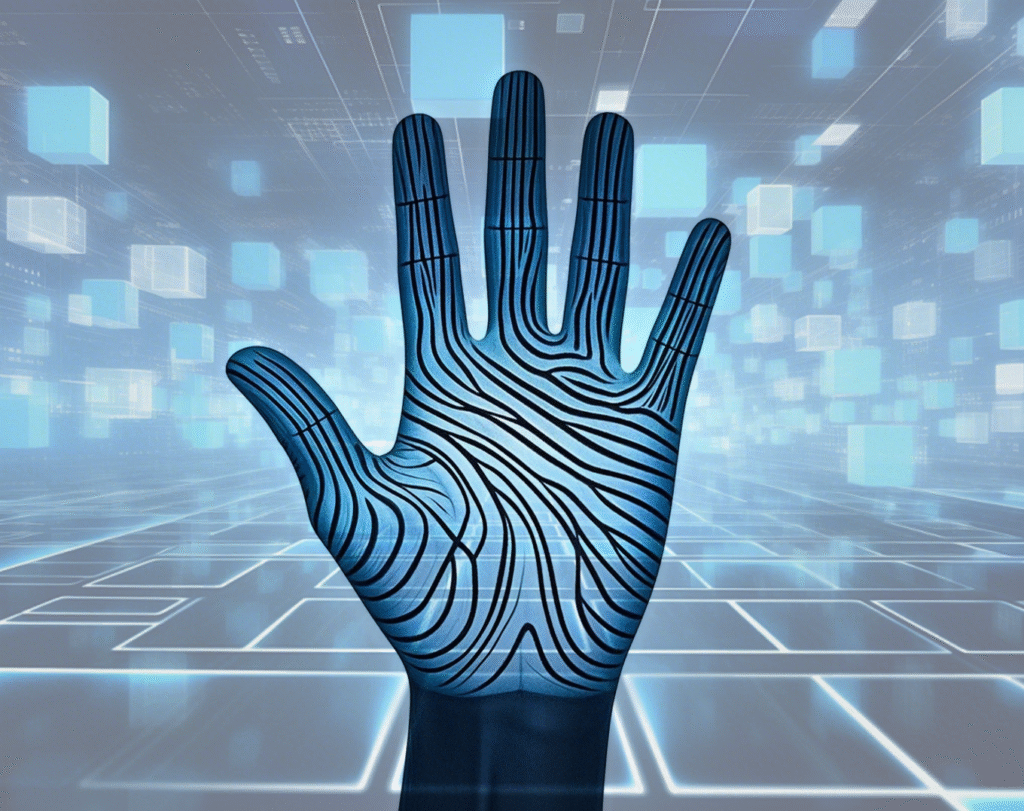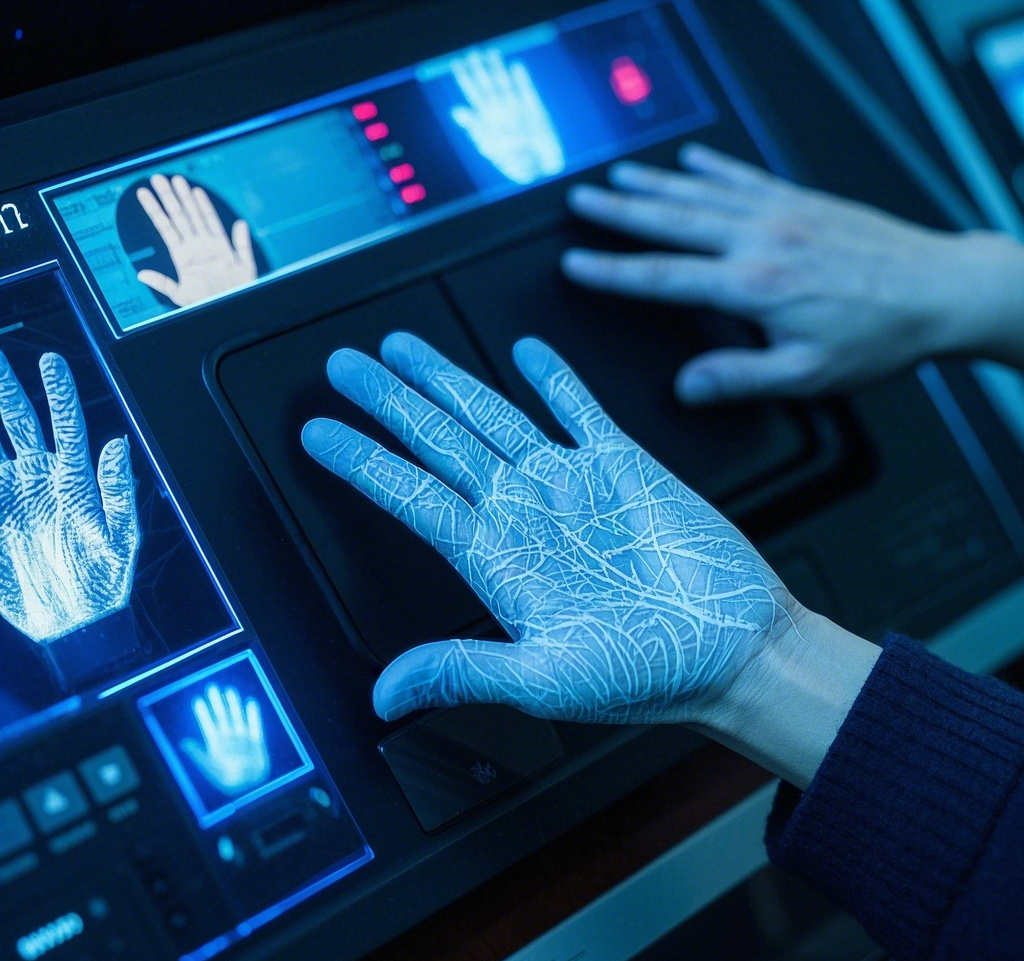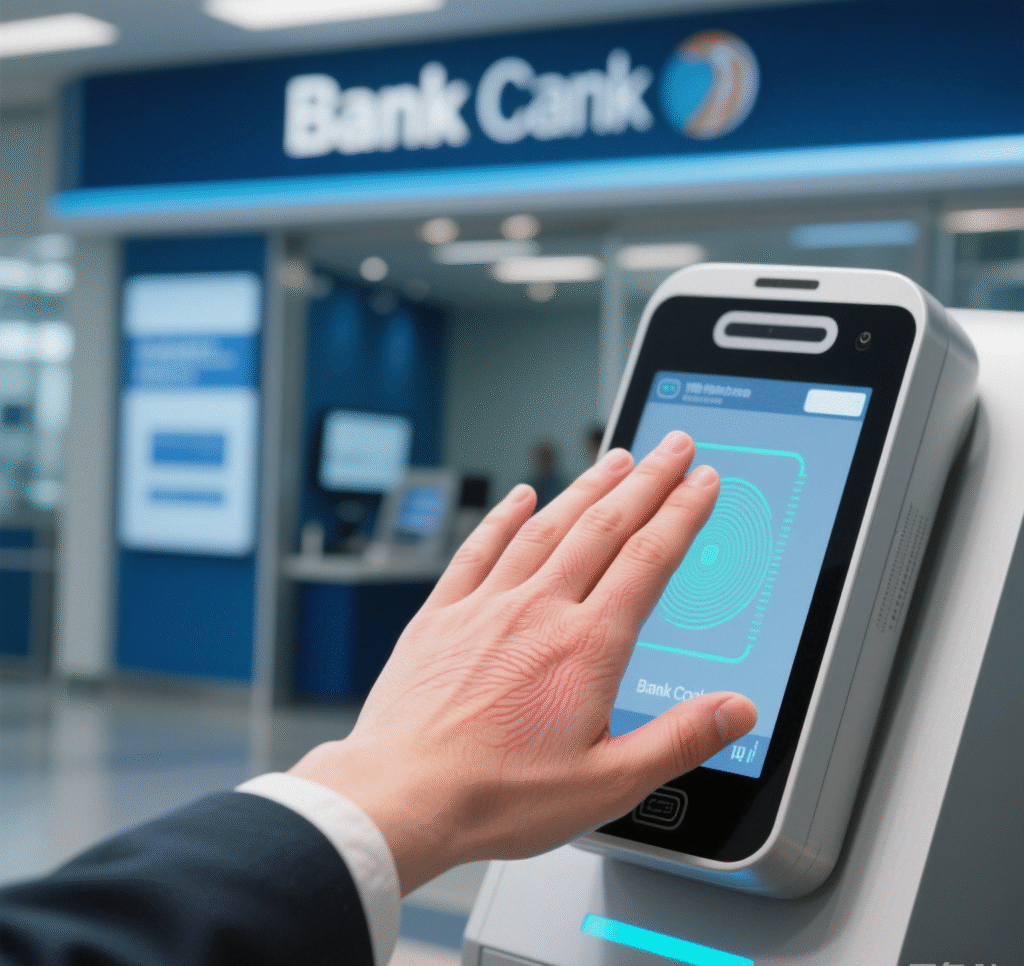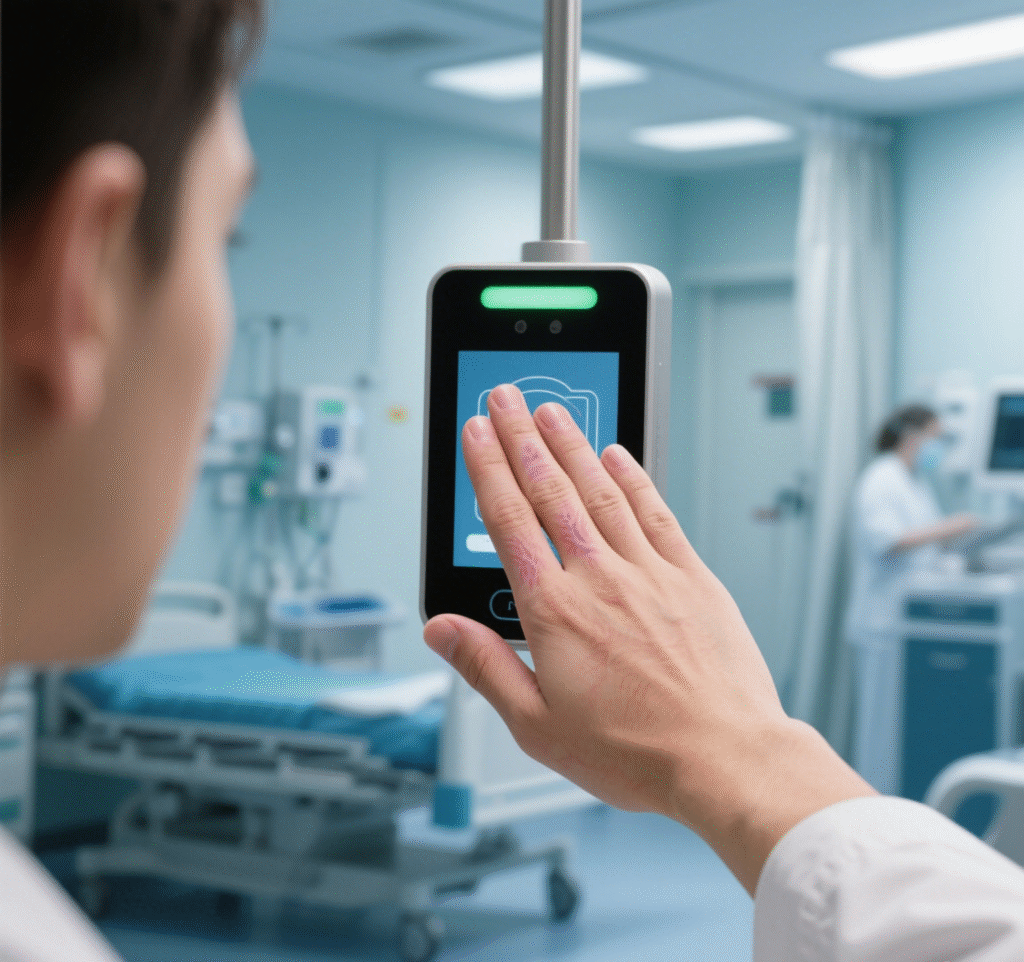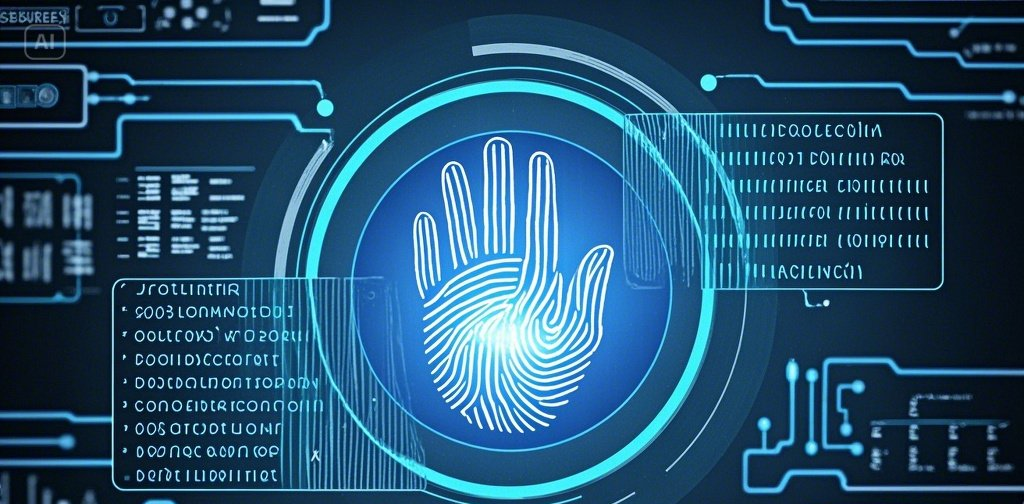Biometric palm scanners are emerging as one of the most reliable and non-intrusive technologies for identification. Unlike traditional methods like fingerprint or facial recognition, they use the unique patterns of veins in the palm to verify identity. This technology is gaining popularity due to its high accuracy, security, and ease of use. In this article, we will explain what a biometric palm scanner is, how it works, and why it’s considered one of the most secure biometric solutions available.
What Is a Biometric Palm Scanner?
A biometric palm scanner is a device that identifies individuals based on the distinct patterns in the veins found in the palm of the hand. Unlike visible palm lines or other features, palm veins are located beneath the skin, making them extremely difficult to replicate. The palm vein scan uses infrared light to capture these patterns, providing a unique and secure method for verifying identity. Because the vein structure is unique to each individual, palm vein recognition offers a high level of accuracy and is more resistant to spoofing than other biometric methods.
Palm vein recognition is gaining widespread adoption in various fields, including access control, time and attendance systems, and secure financial transactions. The non-contact nature of this technology makes it especially useful for hygiene-sensitive environments such as hospitals and airports.
How Does a Biometric Palm Scanner Work?
A biometric palm vein scanner works by capturing the unique vein patterns in the palm using infrared light. Here’s a step-by-step breakdown of the process:
Placement of the Hand
The individual places their palm near the scanner. The scanner uses infrared light to project onto the palm, capturing the unique vein patterns beneath the skin. These patterns are then compared to a pre-registered template to confirm identity. The process is quick and non-intrusive, providing a seamless and secure method for authentication without the need for physical contact, making it ideal for high-traffic or hygienic-sensitive environments.
Infrared Light Capture
The infrared light penetrates the skin and highlights the vein patterns beneath the surface. The unique configuration of veins in the palm is detected by the scanner, which creates a detailed map of the vein structure. This map is then compared to stored data for accurate identification. Since the vein patterns are internal and cannot be easily replicated, this method offers a high level of security, ensuring that only authorized individuals gain access.
Pattern Processing
The captured vein pattern is converted into a digital template. This template is unique to the individual and is stored in a database for future reference. The stored data is encrypted to ensure privacy and security. When the individual returns for subsequent verifications, their palm vein pattern is compared with the stored template, providing a fast and accurate method for authentication that remains reliable over time. This ensures a secure, contactless identification process.
Matching
When the person scans their palm again, the new scan is compared to the stored template. If the patterns match, the individual is identified or granted access. The system verifies the authenticity of the scanned pattern with high precision, ensuring that only the registered individual is recognized. This process happens almost instantly, providing a seamless and secure experience, while also reducing the chances of unauthorized access or identity fraud.
This system is fast, accurate, and non-invasive, offering a smooth experience for users.
Advantages of Biometric Palm Vein Recognition
Жоғары қауіпсіздік
Since palm vein patterns are unique to each individual and hidden beneath the skin, they are extremely difficult to replicate or forge, providing a high level of security. This makes biometric palm vein recognition one of the most secure methods of authentication available, as it is nearly impossible to spoof, ensuring accurate identity verification even in high-security environments.
Non-Contact Scanning
Unlike fingerprint recognition, which generally requires direct contact with the device for identification, palm vein scanning typically only requires the palm to be positioned 5-15 cm away from the device for recognition. This contactless feature eliminates hygiene concerns, ensuring a healthier and cleaner identification environment. It is particularly beneficial in high-traffic areas, healthcare settings, and places where maintaining sanitation is crucial, offering both enhanced security and user convenience.
Fast and Efficient
Palm vein recognition is quick, typically completing identification in about 1 second, making it ideal for high-traffic areas where speed is essential. The process is also highly accurate, with low false acceptance rates, ensuring reliable results even in busy environments. This rapid and precise recognition helps maintain a smooth flow of people while providing strong security and minimizing delays.
Less Prone to Wear or Damage
Unlike palm prints or fingerprints, which can be affected by wear or dirt on the skin’s surface, palm vein recognition remains consistent and reliable throughout an individual’s life. Palm prints are surface features, so if your hand is wet or has dirt on it, palm print recognition may fail. However, palm vein recognition is based on the unique patterns of veins beneath the skin, meaning it will not be affected by these surface conditions. Even if the palm is wet or dirty, the vein recognition process remains accurate and unaffected, ensuring reliable identification at all times.
Hygienic and Convenient
Since the palm vein scanner doesn’t require physical contact, it is more hygienic than other methods like fingerprint scanning, which may become less effective over time due to wear on the skin. Additionally, the contactless nature of palm vein recognition eliminates the risk of cross-contamination, making it ideal for environments where maintaining cleanliness is essential, such as hospitals, schools, and offices. This also ensures long-term effectiveness without degradation from repeated use.
Common Applications of Biometric Palm Scanners
Biometric palm scanners are used in a variety of settings, including:
Қатынасты басқару
For secure entry into restricted areas, palm vein recognition ensures that only authorized individuals are granted access. This technology provides a high level of security by using unique, unchangeable vein patterns, making it nearly impossible to spoof. It also offers quick and accurate identification, reducing wait times while enhancing safety in sensitive environments such as government buildings, data centers, and research facilities.
Time and Attendance Systems
Businesses use biometric palm vein scanners to accurately track employee attendance without the risk of buddy punching or fraud. The unique and secure nature of palm vein patterns ensures that each employee is individually identified, eliminating the possibility of someone else clocking in on their behalf. Additionally, this technology provides a streamlined and efficient process for both employees and employers, enhancing accountability and reducing administrative errors in attendance management.
Financial Security
Palm vein recognition is used in banking applications, including secure ATM transactions and other financial services, ensuring that only the account holder can perform specific transactions.
Healthcare and Public Security
In hospitals and government offices, palm vein scanning can be used to authenticate identities and protect sensitive data. By verifying individuals through their unique palm vein patterns, it ensures secure access to restricted areas and confidential information. This technology reduces the risk of identity theft and unauthorized access, offering a reliable and non-intrusive solution for safeguarding personal and medical records, as well as other critical data in high-security environments.
Future Outlook for Biometric Palm Scanners
The future of biometric palm vein scanners looks promising. As security concerns increase across the globe, more industries are looking to adopt this technology for reliable and efficient identity verification. The continued advancements in palm vein scan technology are expected to enhance the speed, accuracy, and accessibility of palm vein recognition systems.
In the coming years, we may see further integration of biometric palm vein technology into mobile devices, making it easier to access secure information on smartphones or laptops. Moreover, biometric palm vein recognition could play a critical role in the development of smart cities and large-scale security systems, where high levels of identification accuracy are essential.
Жиі қойылатын сұрақтар
A biometric palm scanner is highly accurate, with error rates as low as 0.00008%. The unique palm vein patterns make it a reliable method for identity verification.
Yes, palm vein recognition is very safe. It uses infrared light to scan the palm and capture the vein pattern, which is nearly impossible to replicate, making it a secure authentication method.
Yes, palm vein scanners work effectively in low-light environments due to the use of infrared light, which is not dependent on ambient lighting.
Palm vein recognition is less prone to wear and tear, more hygienic since it doesn’t require physical contact, and offers higher security because vein patterns are unique and hidden beneath the skin.
It is very difficult to spoof a palm vein scan due to the unique and hidden nature of palm vein patterns. Unlike fingerprints or facial features, palm veins are not easily replicated or stolen.
Қорытынды
Biometric palm scanners offer a highly secure, non-intrusive, and accurate solution for identity verification. With its ability to provide precise and contactless authentication, biometric palm vein recognition is fast becoming a preferred choice for various industries. As the technology evolves, we expect further advancements in its integration, making it even more accessible and efficient for securing physical and digital spaces.

